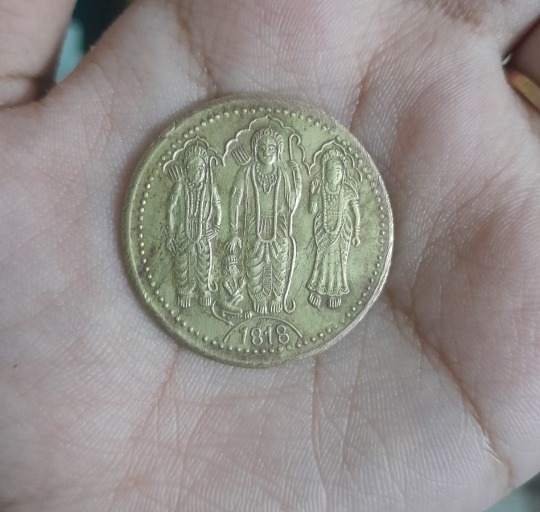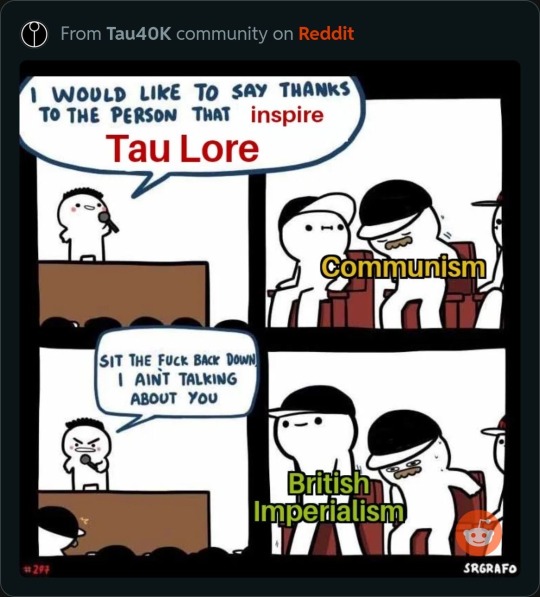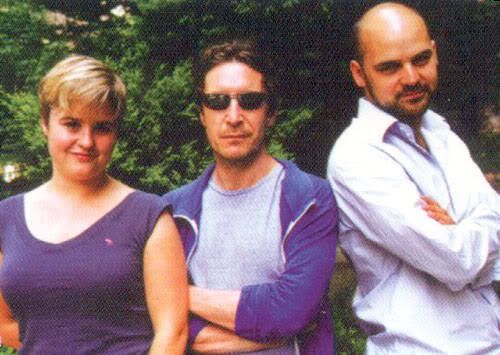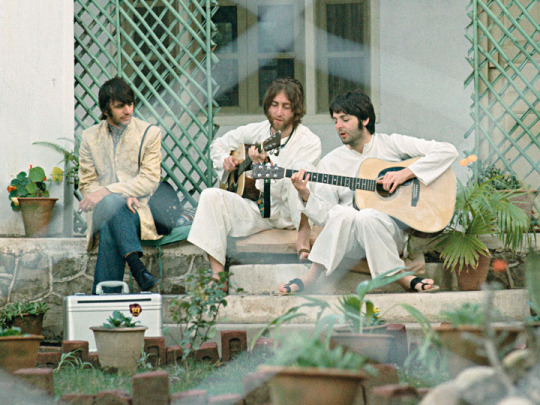#company in india|
Text
Götheborg of Sweden in London
#tall ship#east india company#swedish#götheborg of sweden#18th century#age of sail#replica#merchant vessel#london bridge#beware there is music in the video
1K notes
·
View notes
Text
What do the Fifth House actually do?
Sure, yes, ghosts and tradition and the Heart of the Emperor, and Watchers Over the River - but none of those things give you the kind of assets that mean you can dress your cavalier in a coat that "probably cost more than the Ninth House had in its coffers" for a dinner party.
It's made clear very early on that the Fifth are a power to be reckoned with. When they first receive the letter about the Lyctoral pilgrimage, Gideon assumes it would be on the Third or Fifth. Harrow, meanwhile, has frequently-repeated anxieties about the Ninth being subsumed by the Third or Fifth, to the point that she worries that the anniversary party invitation may be an attempt to wipe out the other Houses. Teacher describes the Fifth's relationship with the Fourth as "hegemonic". The Fifth loom so large in the cultural imagination, they even inform the name of the made up porn magazine that Gideon offers to Crux.
The links between the Third and the Fifth that both Gideon and Harrow make seem to reflect both the fact that these two Houses have particular power and influence, but also that they frequently cooperate. Judith writes about the close cooperation of the Second, Third, and Fifth, a relationship which becomes a source of tension as the scions seek to establish authority after the Fifth are murdered. Judith says:
“The Fifth are dead. I take authority for the Fifth. I say we need military intervention, and we need it right now. As the highest-ranked Cohort officer present, that decision falls to me.” “A Cohort captain,” said Naberius, “don’t rank higher than a Third official.” “I’m very much afraid that it does, Tern.” “Prince Tern, if you please,” said Ianthe.
Which makes it sound as though Abigail might technically have been considered the highest ranking person at Canaan House (likely because she was head of her House and not an heir in waiting like Judith or Coronabeth), and that following her death there is some question as to whether the Second or the Third should take control, but notably no suggestion that anyone else might.
We know what the Second do: they are the leaders of the Cohort and the Bureau, the military and intelligence that forms the core of imperial expansion. Most of the information that we get about the other Houses talks only about their cultural or ritual roles in the empire - we get very little in the way of gritty details of what happens outside of the Dominicus system.
We know a little bit about what the Third does - according to Tor they are cultural trendsetters and players in soft power, but the one detail we get in GTN itself is revealing: when Gideon imagines her glorious future in the Cohort, one of the assignments she considers boring is the prospect of being "in some foreign city babysitting some Third governor." Which makes it sound rather like the Second are conquering the planets and the Third are then running them. But the books are even lighter in details about what the Fifth do, beyond ghosts and manners.
However, there is one suggestive detail: an important topic in HTN is stele travel - the necromantic FTL used by the Nine Houses. And Mercymorn, in describing a stele, specifically states that Fifth House adepts are required for their construction. Which rather makes it sound like the Fifth have a monopoly on the manufacturer of the technology required for FTL travel. Now that in and of itself could be the basis of their enormous wealth - selling aerospace tech to an ever expansionist military is probably quite lucrative.
But there's another element of House imperialism that only gets mentioned in passing that doesn't seem to be entirely accounted for, which Judith describes in As Yet Unsent:
"Their other line of attack is the business contracts. They claim that the services asked of them by the Emperor were set down in lifetime contracts by previous generations, who assumed the contracts would be terminated upon the Emperor’s death."
There are obviously some unanswered questions about the imperialist project of the Nine Houses - both Augustine and Coronabeth question quite why it works the way it does - but from the above it sounds like in many respects it functions exactly as you would expect an empire to: as a vehicle for the exploitation of others' resources.
Perhaps the Cohort themselves administer these business contracts. Perhaps they fall under the purview of the Third House planetary governors. But if you're exporting resources from the living planets of your empire to the mostly desolate planets of the Dominicus system, you're going to need some FTL ships and a whole lot of bureaucracy.
And if there's one other detail that we get about the Fifth, it's that there is something significant about the political power of their bureaucracy. As Judith puts it: "Quinn himself is a Fifth House bureaucrat with all that entails."
Are the Second, Third, and Fifth so close and so powerful because they form the bedrock of the empire: the conquest, control, and exploitation of planets beyond the Dominicus system?
#the locked tomb#tlt#abigail pent#magnus quinn#judith deuteros#coronabeth tridentarius#the fifth house#the third house#the second house#We regret to inform you that spreadsheets dad is maybe running the necromantic East India Company
1K notes
·
View notes
Text


GUYS GUYS SEE WHAT MY MAA FOUND TODAY :D
An 1818 coin with Shri Ram, Maa Sita, Lakshman ji and Bajrangbali on it 🥹
It's so beautiful honestly
#old coins#1818 coin#shri ram#maa sita#lakshman#hanuman#coin#east india company#desiblr#desi tumblr#desi tag#desi#desi teen#hindublr
324 notes
·
View notes
Text
Speaking on the Ellen Show, Knightley said her daughter (who was born in 2015) was “banned” from watching Cinderella, which Disney produced as a cartoon in 1950 and a live-action film in 2015. “[Cinderella] waits around for a rich guy to rescue her. Don't. Rescue yourself!
Says the woman who starred in a trilogy that said, "No murderers and theives were good actually because they wanted freedom."
#the way we portray pirates in kid's media is kind of insane y'all#pirates of the caribbean#pirates killed people#they destory an entire town in the first part of the movie#but they then become “the good guys”#and yes the East India trading company sucks#but so do pirates who murder people#there were some very complex issues around piracy in that era#but i doubt a kid is going to pick that up#anyway I'm not actually attacking Keira Knightley but this sentiment in general#also Cinderella was saved by an OLDER WOMAN#a fairy godmother#not the prince#the prince was secondary
187 notes
·
View notes
Text

#seriously#it’s British imperialism plus India’s caste system#there is Japanese influence too with spheres of expansion and the armor style#but it’s a British company first and foremost l#tau#t’au#tau empire#t’au empire#wh40k#wh40000
285 notes
·
View notes
Text
Secondo: Pirates of the Caribbean really introduced an eldritch octopus man that kills indiscriminately and torments the souls of the dead for fun as their poster villain, but then you watch the movie and it’s like “oh, actually, the worst villain in this movie is a small white British man who acts as the herald of capitalism.” Here is a man so heartless he literally cut his own heart out of his chest, but even HE isn’t as evil as the fucking East India Trading Company. That was very very brave and very very accurate of them.
#the East India Trading Company was very evil#pirates of the caribbean#taintposting#shitghosting#ghost#ghost band#incorrect quotes#ghost bc#the band ghost#ghost fandom#ghost posting#secondo emeritus#secondo#papa 2#papa ii#papa emeritus ii
105 notes
·
View notes
Text










Paul and (most of) his audio companions.
#yeah i’m including the eleven#he travelled in the TARDIS for a few episodes in ravenous#never seen a picture with rakhee (bliss)#the one with julie cox is a scan of a tiny tiny photo from the insert of company of friends hence the poor quality#paul mcgann#doctor who#eighth doctor#8th doctor#big finish#india fisher#conrad westmaas#julie cox#sheridan smith#alex kingston#ruth bradley#sonny mcgann#emma campbell jones#hattie morahan#nicola walker#mark bonnar#rebecca root#tom price#mcgann monday#nice to see paul mock-strangles his kids as well as everyone else!
120 notes
·
View notes
Text

#this is a semi shitpost please don't mistake it for me trying to claim the work of a massive company is peak activism#but I really enjoyed this movie#well the bits I could hear anyway sometimes being hard of hearing with no subtitles is a real struggle#across the spiderverse#atsv#marvel#pavitr prabhakar#spider man india#hobie brown#spider punk#gwen stacy#spider woman
115 notes
·
View notes
Text
.
#okay random story time i don't know why im narrating this or how i even stumbled upon this memory rn#but i generally do sad vents in the tags and for a change this is a funny one#so back in highschool (i say highschool but i mean junior college) i used to visit this park near my house a lot#i was an sg kid back then and the thing about parks there is that they're kinda beach-parks and they have the best cycling/running tracks#they're also really massive parks so i used to go often. sometimes bicycling. other times walking. yeah. the park was like my sanctuary#anyway. there are quite a few bike rental areas in the park and there was a cute lil shop next to this one particular rental place#and they sold like biscuits and water and icecreams and stuff and i went there a lot#and on one particular day i went there and there was this guy around my age part timing at that shop#now again this might be culture specific bc i dont see it in india but part timing in uni/pre-uni is pretty common is sg#a lot of shops and restaurants employ teenagers to twenty something ppl for part time jobs... anyway im just adding context#point is that i had walked to the park with my mum that day and she told me to go buy a couple icecreams so i went to the shop#and i saw this guy around my age and like. not to be a simp but this dude was so pretty?#like he saw someone had come to the counter so he looked up and shot a smile and i thought i got slapped by sunlight#i could spend the next several lines going on about his pretty tan skin and his glowing raven eyes but this is pathetic enough so ill stop#anyway he saw me and smiled really wide (customer service smile- i thought to myself) and i smiled back and asked for icecreams or whatever#and then this guy started getting chatty right. so he was all 'you come here (to the park) often right? ive seen you with your bike a lot'#see now. the problem with me is that i always think im bothering people. this poor dude was attempting to make conversation#and i was replying with one word answers#and i wasn't even realizing that he didnt want that. bc he kept asking more questions and i. kept. shutting them down.#then when he gave me the icecream he was all 'are you here alone? icecream alone is no fun... i could keep you company if you want..?'#which. he was being really cute about right. but because im so fucking dense i was all 'oh no i came with my mom actually'#and he went 'aw man' in this really cute but faux sad way which i didnt understand at the time and i left and then#after three full fucking days. i realized this man was tryna hit on me?#and then i went to the park like a week later and he was gone. poof. i even thought of asking the uncle in charge of that place#then i got too embarrassed and chickened out#yeah so turns out my neurodivergence neutralizes any sort of rizz that comes my way#i could've been chilling with a cute boyf rn but no😩 this is my destiny#megumi in the tags
26 notes
·
View notes
Text





INT: How much singing and composing did you witness [in India]?
PS: I didn't see much, because they did that kind of thing mostly at night. So I only ever saw or was part of that one session that I photographed. I was walking back to my tent late one afternoon before dinner, and I just heard John and Paul singing from behind the trees. And I walked over and saw what they were doing, and I went and got my camera, which is the only time I took my camera out on purpose. So I took a few shots through the fence, then I walked through and just sat down, with Paul and John side by side, and just hung out. Paul had a piece of paper with the words, "Ob-la-di, Ob-la-da, oh, how the life goes on," and it was on the step beneath him. The first picture in the book is the shot of him looking down and his hand is off the guitar, and he's reading the words, which he didn't have memorized yet. And they just played with it for about five minutes, having a wonderful time fooling around. It was such fun, I mean them having so much fun. When I first sat down, they were actually just playing bits and fragments of their older songs.
INT: Previously recorded material?
PS: Yeah, like Michelle and Eleanor Rigby. Just musically meandering. Then Paul started looking down at the piece of paper and I took a picture.
INT: Was George around?
PS: No. But Ringo was siting there with his leg crossed, a cigarette in his hand. So after they had played Ob-La-Di, Ob-la-Da over and over again, they stopped for a breather, and that's when Paul looked up at me, smiled, and with this really wonderful twinkle in his eye, said, "That's all there is so far, we haven't got the words yet." So that was the only time I experienced it.
INT: That's interesting because Lennon had stated in many interviews that he and McCartney had really stopped composing together in late '64 or early '65, but Paul said in his recent book that they actually composed together right to the end. So what you witnessed reinforces Paul's version.
PS: That is interesting. And they were having so much fun together. There's no question about it.
— Interview with Paul Saltzman (Beatlology Magazine, January/February 2001 Edition)
#The Beatles#John Lennon#Paul McCartney#Ringo Starr#Paul Saltzman#1968#India#(I remember the first time reading about the boys in India)#(And I remember just reading endlessly about how negative it all was and that it was the turning point/they were all doing their own thing)#(That J & P were barely speaking to each other)#(While I also don’t think it was a 100% happy/celebratory time for them)#(I think it’s important to note that their relationship wasn’t completely fractured during this time)#(They were still having fun in each other’s company)#(As always - the truth is usually somewhere in the middle)
228 notes
·
View notes
Text
The Sign of Four: The Strange Story of Jonathan Small (Part Two of Two)
CW for graphic discussion of war crimes.
Sepoy was a term, derived from the Persian sepāhī meaning "infantry soldier", that was used to refer to Indian soldiers, generally with muskets, in the Mughal Empire's armed forces and also Maratha Army. Europeans then used the term to refer to Indians in their colonial forces. One of the names of the rebellion was the Sepoy Mutiny.
Today, Sepoy is the equivalent of "Private" in the Indian and Pakistani armies.
Cawnpore, now Kanpur, was the scene of a siege of East India Company forces and associated civilians in 1857. The EIC surrendered in return for safe passage offered by Nana Sahib, leader of the rebellion on the area. Then, for unclear reason, the departing men, women and children were attacked - no definitive evidence that Sahib authorised this has been found. All the men were killed, with the surviving women and children taken to a villa called Bibighar. 22 days later, although some sepoys refused the order, they were nearly all massacred, with their naked bodies thrown down a well. The British arrived the next day to recapture the city and then carried out horrific summary justice against any rebels who could not prove their innocence. Space precludes me from covering it in depth.
Historically, treason, like the rajah has basically done, would result in Parliament passing an act of attainder, basically seizing your entire personal property plust titles without any judicial process. Not sure what the East India Company's rules were on that. The US constitution specifically bans Congress and the states from passing any bills of attainder.
I'd need to enquire about this, but EIC sepoys apparently swore loyalty to the salt they had eaten, hence the term "true to their salt".
A postern is a side entrance in a city or castle wall, usually concealed so it can be used for stealthy entrances and exits; it could also be used during a siege for the defenders to make an attack on their besiegers. The foundations of one from the London Wall can be seen next to the Tower of London.
A firelock is a musket where the powder is ignited by sparks, either from a lit match or friction from a piece of flint.
The wet season in India lasts from around June to September, when 80% of the annual rainfall occurs. This is vital for Indian agriculture and delays in it occuring can cause real problems. In any event, you get near-daily thunderstorms and torrential downpours. This can result in roads getting badly damaged and flooding in places with poor drainage. Bollywood is a particular fan of romantic scenes involving monsoons, because they allow for sexy wet people.
I believe a mound-heap is another term for midden, an outside dump for all sorts of domestic waste, ranging from broken pottery to animal bones to human waste. Archaelogists are particular fans of them as they provide evidence of past human habitation of a sight. Poor people in Victorian London would search through them for any items of value.
The British last executed someone by firing squad in 1941 when Josef Jakobs, a German NCO convicted of spying was shot at the Tower of London. Two American soldiers would be shot at Shepton Mallet in 1944 for murdering fellow soldiers.
Before the introduction of compulsory recording of police interviews in 1992, records of interviews were generally made from notes taken during the interview or even the officers' memory, with associated problems. The interviewee would then be asked to sign the official record, something frequently refused, especially if it looked like they were signing a confession. It was also pretty common for police to engage in "verballing" i.e. falsifying the record to make it appear there had been a confession.
"The first water" means the diamonds were of the highest quality, basically having the appearence of clear water.
Commutations of death sentences were in fact quite common, especially for lower-level offences. If you see "death recorded" in a trial transcript, it means that the judge had to pass the death sentence, but clearly intended for there to be a pardon or commutation. This often occurred for sodomy convictions.
Mount Harriet is a 383-metre high hill today called Mount Manipur.
A military officer who went bankrupt, especially for gambling debts, was going to lose his commission at best. Bankruptcy is still going to be a real concern in any armed forces today, especially for your security clearance.
It is around 375 miles as the metaphorical crow flies (crows are not sea birds) to Myanmar, then Burma and a British colony. The only place you could reasonably reach from Port Blair that was not under some form of British control was Siam (now Thailand), which remained independent throughout the imperial era, except when Japan invaded it in 1941.
Yawl has several definitions, including a sail layout commonly used for racing yachts in this period.
The belief that the Andaman indigenous people were cannibals appears to have come from the account of Marco Polo.
Hundreds of people tried to escape from the Andaman penal colony, including 288 of the initial 1858 arrivals, a third of those who survived the original journey. However, the thick jungle and "the murderous attacks of the savage aborigines", as military doctor and original governor James Pattison Walker put, led to 81 survivors limping back to Port Blair. They asked for mercy and medicine. Walker had them and seven other recaptured prisoners all hanged the same day. Many who got off the island likely drowned.
Two prisoners in 1872 managed to get all the way to London, after convincing a British vessel they were shipwrecked fishermen. However, the manager of the Strangers Home for Asiatics in London where they ended up got suspicious, took photographs of them and sent them around the empire. That led to their recapture.
The calabash fruit, also known as the gourd, can be turned into bowls or other containers. Gourd is also a slang term for "mind".
The pilgrims sailing from Singapore to Jiddah (or more usually Jeddah) would likely have been heading for Mecca to take part in the hajj. This a pilgrimage considered one of the five pillars of Islam and mandatory at least once in a lifetime for any Muslim with the physical and financial ability to do it. Modern travel has made this a lot less hazardous - past pilgrims faced dangers including piracy, with even some of the Caribbean pirates sailing around Africa to attack ships for the treasures that might be going with them. At least until they reach Mecca, when everyone dresses in the same simple clothing.
At the time of this story, Jeddah, Mecca and Medina were in the Vilayet of the Hejaz, a province of the Ottoman Empire.
The 1445/2024 Hajj, ongoing as I post this, has attracted 1.833 million pilgrims. These numbers have caused stampedes and spread of disease; this year has also seen deaths due to heat stroke in 48 degrees Celsius temperatures. The Saudi authorities have taken various measures to improve safety, including registration requirements and improvements to the site layout provide escape routes.
From Jeddah (and other places in the region), pilgrims would historically travel to Mecca in large camel caravans with military escort as protection against bandit attacks. Today, Jeddah is home to the biggest airport in Saudi Arabia with a dedicated and distinctive terminal for the pilgrimage, as the vast majority of pilgrims arrive via air today. From there, modern roads and a new high-speed railway provide easy access to the holy sites.
Performing in "freak shows" was one of the few ways that severely disabled people could earn a living in these period - it was often that, begging or the workhouse; Joseph Merrick could not hold down any other employment because of his appearance. People with microcephaly i.e. a smaller than usual head were passed off as "missing links". However, by 1888, public opinion was turning against such acts.
#letters from watson#sherlock holmes#history#factoids#the sign of four#sign#east india company#india
16 notes
·
View notes
Text

Götheborg of Sweden in London, 2022
526 notes
·
View notes
Text
obviously the UK is no better lol but what i learnt from visiting a handful of museums in amsterdam is that the dutch are very very shameless about their colonial history
#.txt#it was literally like! we love the DUTCH GOLDEN AGE we love the DUTCH EAST INDIA COMPANY we love the NEW WORLD
77 notes
·
View notes
Text
i know i talk a lot abt Coworker Ben on here but he rly is just such a normal guy who i can Also be myself (+ unmask) around and those two things dont often go together at all. its just very nice to have someone at work who i can like.. let know me i guess. plus hes a creeker so yknow, principle. hes kinda like the antithesis of gregory house
#desire mona#hes one of those guys that had just done everything also. like maybe hes just in his 30s but come on#he is in a symphony orchestra. he can juggle while riding a unicycle. he plays dnd. he lived in india for 3 months#he also enjoys my company (guy who doesn't know how to do anything correctly ever)#mona and the soft spot they have for Normal Guys#he called me mona for the first time today and i had to contain a yippee. gender affirmed by an adult figure (confetti)#no i dont have a healthy relationship with my parents why do you ask#crybaby - destroy boys#thoughtsing#on the clock
11 notes
·
View notes
Text

"Pancho Patterson is a talented, bogan Spider-Man from Australia, and when he shoots his webs it sounds like the KOOKOOKAAKAAKAA of the kookaburra."
#the utter clownery of this company i swear to fucking god !!!#mandala-web-shooting pavitr is going to put rangoli out of business#spider man india#pavitr prabhakar#this is the description for pavitr from that weird puzzle game that dropped a while ago? ehh idk#agnirambles#spider man
18 notes
·
View notes
Text
[T]he Dutch Republic, like its successor the Kingdom of the Netherlands, [...] throughout the early modern period had an advanced maritime [trading, exports] and (financial) service [banking, insurance] sector. Moreover, Dutch involvement in Atlantic slavery stretched over two and a half centuries. [...] Carefully estimating the scope of all the activities involved in moving, processing and retailing the goods derived from the forced labour performed by the enslaved in the Atlantic world [...] [shows] more clearly in what ways the gains from slavery percolated through the Dutch economy. [...] [This web] connected them [...] to the enslaved in Suriname and other Dutch colonies, as well as in non-Dutch colonies such as Saint Domingue [Haiti], which was one of the main suppliers of slave-produced goods to the Dutch economy until the enslaved revolted in 1791 and brought an end to the trade. [...] A significant part of the eighteenth-century Dutch elite was actively engaged in financing, insuring, organising and enabling the slave system, and drew much wealth from it. [...] [A] staggering 19% (expressed in value) of the Dutch Republic's trade in 1770 consisted of Atlantic slave-produced goods such as sugar, coffee, or indigo [...].
---
One point that deserves considerable emphasis is that [this slave-based Dutch wealth] [...] did not just depend on the increasing output of the Dutch Atlantic slave colonies. By 1770, the Dutch imported over fl.8 million worth of sugar and coffee from French ports. [...] [T]hese [...] routes successfully linked the Dutch trade sector to the massive expansion of slavery in Saint Domingue [the French colony of Haiti], which continued until the early 1790s when the revolution of the enslaved on the French part of that island ended slavery.
Before that time, Dutch sugar mills processed tens of millions of pounds of sugar from the French Caribbean, which were then exported over the Rhine and through the Sound to the German and Eastern European ‘slavery hinterlands’.
---
Coffee and indigo flowed through the Dutch Republic via the same trans-imperial routes, while the Dutch also imported tobacco produced by slaves in the British colonies, [and] gold and tobacco produced [by slaves] in Brazil [...]. The value of all the different components of slave-based trade combined amounted to a sum of fl.57.3 million, more than 23% of all the Dutch trade in 1770. [...] However, trade statistics alone cannot answer the question about the weight of this sector within the economy. [...] 1770 was a peak year for the issuing of new plantation loans [...] [T]he main processing industry that was fully based on slave-produced goods was the Holland-based sugar industry [...]. It has been estimated that in 1770 Amsterdam alone housed 110 refineries, out of a total of 150 refineries in the province of Holland. These processed approximately 50 million pounds of raw sugar per year, employing over 4,000 workers. [...] [I]n the four decades from 1738 to 1779, the slave-based contribution to GDP alone grew by fl.20.5 million, thus contributing almost 40% of all growth generated in the economy of Holland in this period. [...]
---
These [slave-based Dutch commodity] chains ran from [the plantation itself, through maritime trade, through commodity processing sites like sugar refineries, through export of these goods] [...] and from there to European metropoles and hinterlands that in the eighteenth century became mass consumers of slave-produced goods such as sugar and coffee. These chains tied the Dutch economy to slave-based production in Suriname and other Dutch colonies, but also to the plantation complexes of other European powers, most crucially the French in Saint Domingue [Haiti], as the Dutch became major importers and processers of French coffee and sugar that they then redistributed to Northern and Central Europe. [...]
The explosive growth of production on slave plantations in the Dutch Guianas, combined with the international boom in coffee and sugar consumption, ensured that consistently high proportions (19% in 1770) of commodities entering and exiting Dutch harbors were produced on Atlantic slave plantations. [...] The Dutch economy profited from this Atlantic boom both as direct supplier of slave-produced goods [from slave plantations in the Dutch Guianas, from Dutch processing of sugar from slave plantations in French Haiti] and as intermediary [physically exporting sugar and coffee] between the Atlantic slave complexes of other European powers and the Northern and Central European hinterland.
---
Text above by: Pepijn Brandon and Ulbe Bosma. "Slavery and the Dutch economy, 1750-1800". Slavery & Abolition Volume 42, Issue 1. 2021. [Text within brackets added by me for clarity. Bold emphasis and some paragraph breaks/contractions added by me. Presented here for commentary, teaching, criticism purposes.]
#abolition#these authors lead by pointing out there is general lack of discussion on which metrics or data to use to demonstrate#extent of slaverys contribution to dutch metropolitan wealth when compared to extensive research#on how british slavery profits established infrastructure textiles banking and industrialisation at home domestically in england#so that rather than only considering direct blatant dutch slavery in guiana caribbean etc must also look at metropolitan business in europe#in this same issue another similar article looks at specifically dutch exporting of slave based coffee#and the previously unheralded importance of the dutch export businesses to establishing coffee mass consumption in europe#via shipment to germany#which ties the expansion of french haiti slavery to dutch businesses acting as intermediary by popularizing coffee in europe#which invokes the concept mentioned here as slavery hinterlands#and this just atlantic lets not forget dutch wealth from east india company and cinnamon and srilanka etc#and then in following decades the immense dutch wealth and power in java#tidalectics#caribbean#archipelagic thinking#carceral geography#ecologies#intimacies of four continents#indigenous#sacrifice zones#slavery hinterlands#european coffee
25 notes
·
View notes